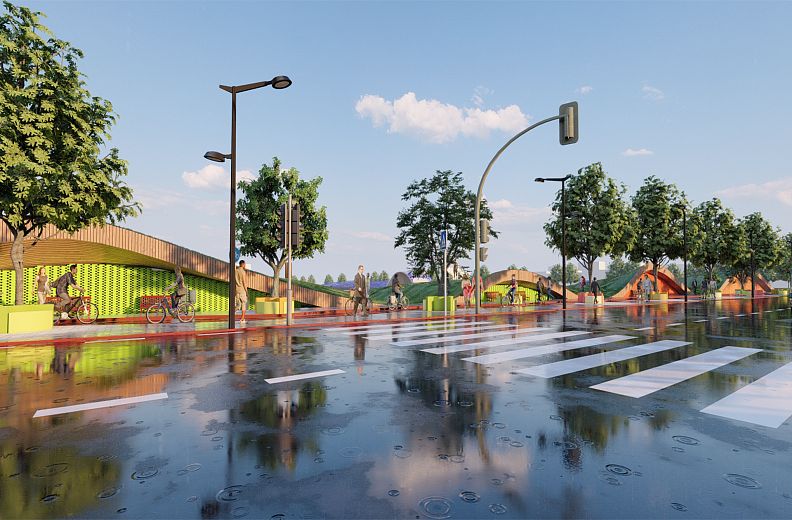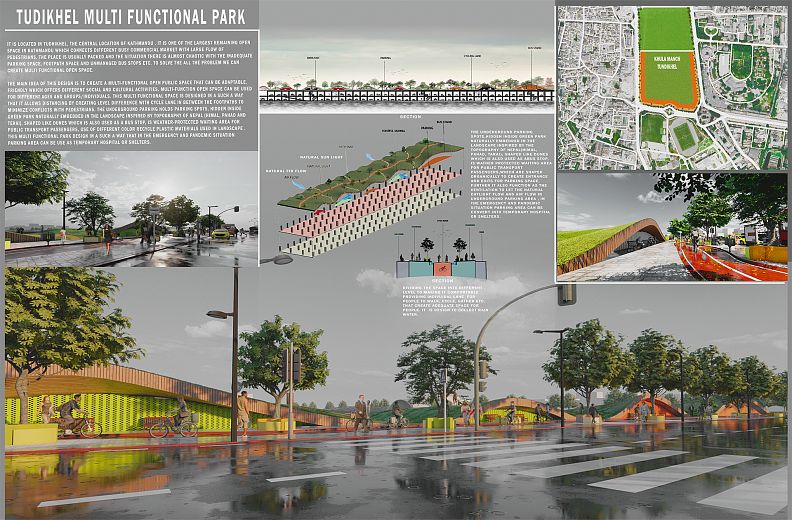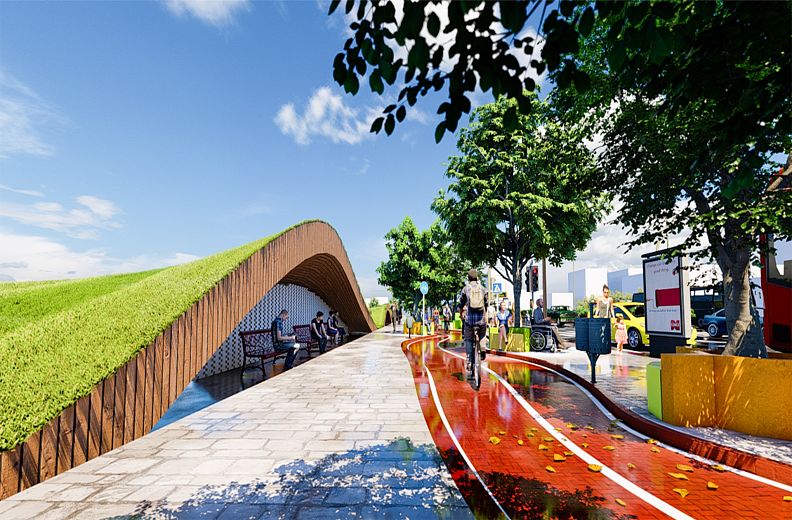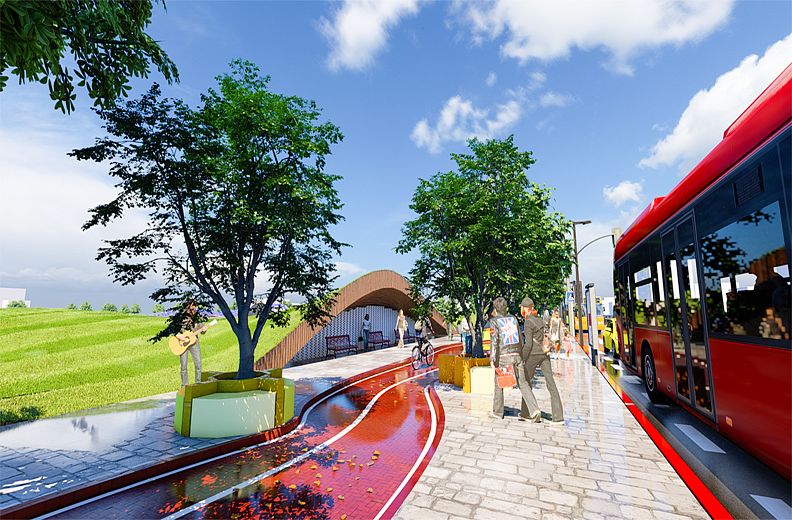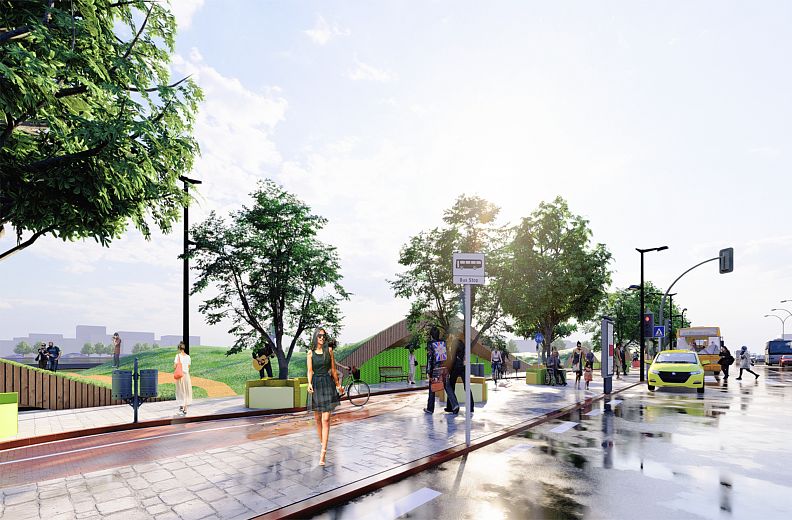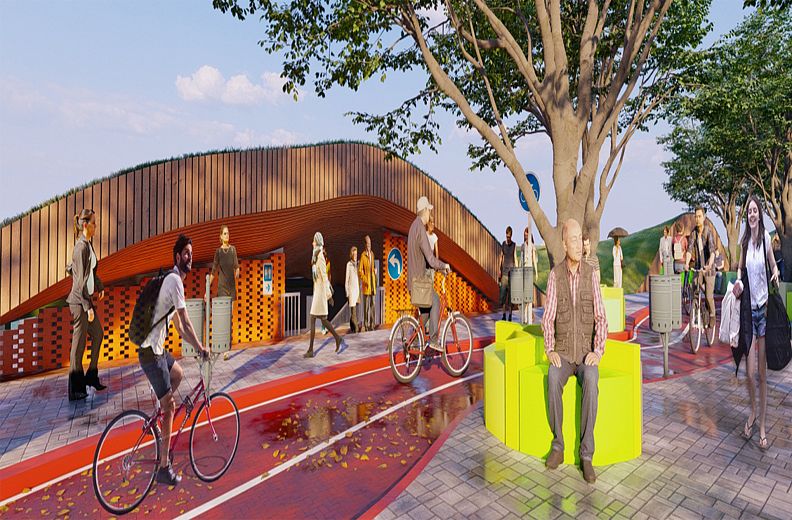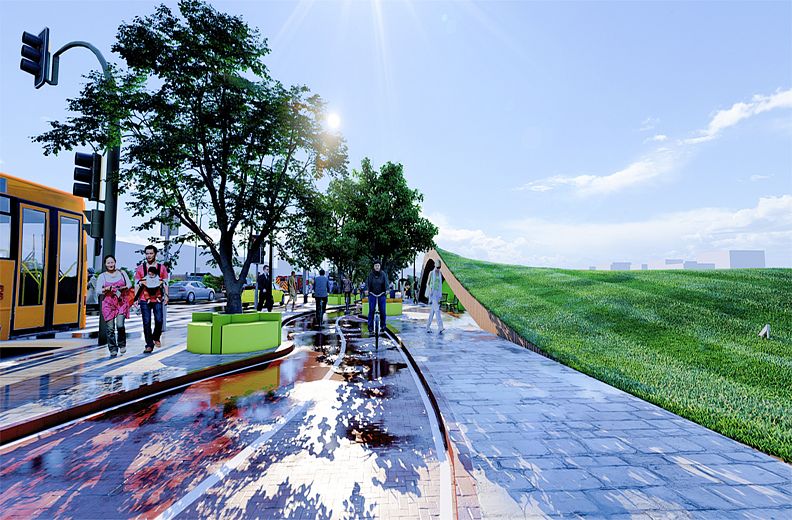TUDIKHEL MULTIFUNCTIONAL PARK

Project idea
The main idea of this design is to create a multi-functional open public space that can be adaptable, friendly which offers different social and cultural activities. Multi-function open space can be used for different ages and groups/individuals.
Project description
Kathmandu, the capital city of Nepal is one of the most populated cities in the country with a population of 3 Million. With the rapid increase in urbanization, open space in Kathmandu is shrinking day by day. As a result, problems such as (a) non-availability of the parking area, (b) no space of refreshment, (c) lack of greenery space, (d) decrease of groundwater availability, etc. have arisen.
Considering the problem, I have designed this project of Multifunctional Park taking the reference of Tudhikhel, the central location of Kath- mandu which connects different busy commercial market with a large flow of pedestrians. The place is usually packed and the situation there is almost chaotic with the inadequate parking space, footpath space, and unmanaged bus stops. It is one of the largest remaining open spaces in Kathmandu. During the earthquakes of April 2015, it gave shelter to thousands of people.
The main idea of this design is to create a multi-functional open public space that can be adaptable, friendly which offers different social and cultural activities. Multi-function open space can be used for different ages and groups/individuals. This space is designed to allow distancing by creating a level difference with a cycle lane in between the footpaths to minimize conflicts with pedestrians that reduce the crowd, which can create distance between pedestrians.
There are existing trees on site. They will be retained during construction and use as the main design element with recycled plastic seats with circular shapes inspired by the Nepalese traditional design named Chautari (place to rest). The shade of street trees reduces the temperature which comforts people to walk, cycle, or gather for social activities.
The underground parking holds parking spots, hidden inside the green park naturally embedded in the landscape inspired by the topography of Nepal (Himal, Pahad, and Terai). This will reduce the parking space problem of Kathmandu also it will help new-road inner-city areas to be vehicle-free – “walk-only zones” and can be a source of revenue for the local government.
Technical information
Shaped like dunes, also used as a bus stop, is a weather-protected waiting area for public transport passengers, shaped organically to create entrances and exits for the parking space. Further, it also functions as the ventilation to let the natural daylight and natural airflow in the underground parking areas. In the emergency and pandemic situation parking area can be converting into temporary hospitals or shelters.
The design also ensures the use of recycling plastic materials used in the landscape which helps to protect the environment at the same time.
